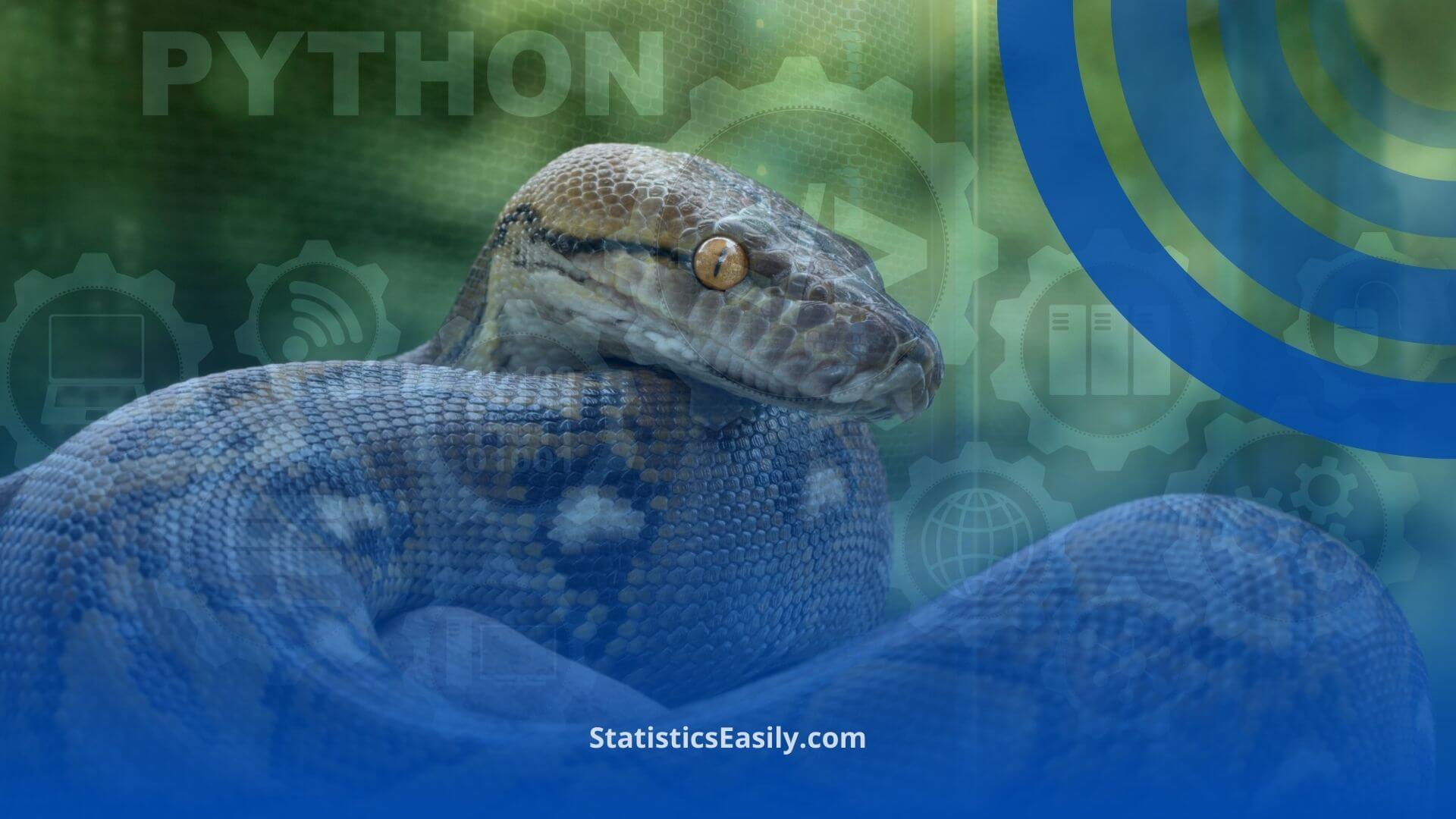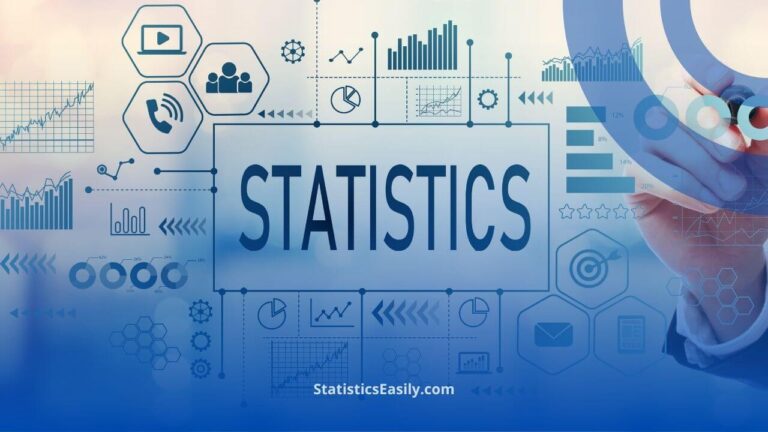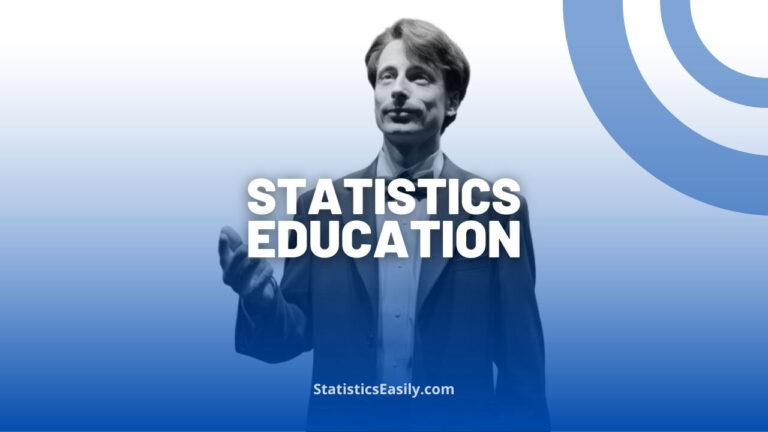Generalized Linear Models in Python: A Comprehensive Guide
You will learn the transformative power of Generalized Linear Models in Python for robust data analysis.
Introduction
Generalized Linear Models (GLMs) have become a cornerstone in data science, offering a versatile framework for analyzing various data types. Unlike traditional linear models that assume a normal distribution and a linear relationship between the dependent and independent variables, GLMs allow the response variable to have a non-normal distribution, providing a more flexible approach to modeling real-world data.
With its comprehensive libraries and tools, Python stands out as an ideal platform for implementing GLMs. Its syntax is intuitive, and the availability of libraries like Pandas for data manipulation, NumPy for numerical operations, SciPy for scientific computing, and statsmodels for statistical modeling makes Python a powerful tool for statistical analysis.
The purpose of this guide is to navigate you through the intricacies of Generalized Linear Models in Python. We aim to provide clarity and depth, ensuring you grasp the theoretical foundations and practical implementations of GLMs. From understanding the basic concepts to applying them in real-world scenarios, this guide will equip you with the knowledge and skills to master GLMs in Python.
By delving into this comprehensive guide, you will uncover the robust capabilities of GLMs and learn how to harness Python’s potential to analyze and interpret complex data sets. Whether you are a seasoned data scientist or a newcomer to the field, this guide will enhance your analytical toolkit, enabling you to make insightful discoveries and contribute meaningfully to the world of data science.
Highlights
- GLMs in Python offer unparalleled flexibility across data distributions.
- Python’s libraries streamline GLM implementation, enhancing analytical accuracy.
- Logistic regression in Python illuminates categorical data relationships.
- Poisson regression in Python unravels frequency and count data insights.
- Python GLMs facilitate predictive accuracy in complex datasets.
Ad Title
Ad description. Lorem ipsum dolor sit amet, consectetur adipiscing elit.
Foundations of Generalized Linear Models
The inception of Generalized Linear Models (GLMs) marked a significant evolution in statistical methodologies, providing a unified framework that extended traditional linear models to accommodate a broader spectrum of data distributions. This expansion was primarily driven by the recognition that real-world data often defy the strict assumptions of normality and linearity, necessitating a more adaptable modeling approach.
Unlike traditional linear models, which presuppose a constant variance and a direct relationship between the response and predictor variables, GLMs introduce a layer of flexibility through link functions. These functions connect the linear predictor to the mean of the response variable, allowing for data modeling that adheres to different probability distributions such as binomial, Poisson, and gamma distributions.
Key concepts foundational to GLMs include:
- Link Function: A crucial component that relates the linear predictor to the expected value of the response variable, enabling the accommodation of non-linear relationships.
- Probability Distribution: GLMs are distinguished by their ability to model response variables that follow various exponential family distributions, such as normal, binomial, and Poisson distributions.
- Dispersion Parameter: This parameter measures the variance in the response variable, providing insights into the data spread around the predicted values.
The theoretical underpinning of GLMs is grounded in the principle of maximum likelihood estimation, a method employed to estimate the model parameters that best explain the observed data. This approach ensures that the constructed model is statistically robust and capable of capturing the intrinsic patterns within the data.
The distinction between GLMs and traditional linear models lies in their capacity to handle a more comprehensive array of data types and their methodological approach to addressing the complexities inherent in real-world data. By embracing the variability and distributional characteristics of the data, GLMs offer a powerful toolset for researchers and analysts to extract meaningful insights and make informed predictions.
As we delve deeper into the practical applications of GLMs within the Python programming environment, it becomes evident that this statistical framework, coupled with Python’s computational capabilities, forms an indispensable duo for data scientists seeking to unravel the intricacies of complex datasets.
Python and GLMs: A Synergistic Approach
Integrating Generalized Linear Models (GLMs) with Python represents a powerful synergy, leveraging Python’s extensive ecosystem for data science to enhance the versatility and efficiency of GLM implementations. This section overviews the essential Python libraries pivotal for GLM analysis. It discusses the inherent benefits of using Python for this purpose.
Python’s Ecosystem for Data Science
Python’s ascendancy as the language of choice for data scientists is mainly attributable to its rich ecosystem, characterized by libraries catering to diverse data analysis and modeling aspects. For GLM implementations, the following libraries are instrumental:
- Pandas: Offers high-level data structures and wide-ranging tools for data manipulation and analysis, facilitating easy handling of complex data sets.
- NumPy: Provides support for large, multi-dimensional arrays and matrices, along with a collection of mathematical functions to operate on these arrays, enhancing numerical computations.
- SciPy: A library used for scientific and technical computing, it includes modules for optimization, linear algebra, integration, interpolation, and other tasks.
- statsmodels: This library specializes in statistical models, tests, and data exploration, offering a solid foundation for implementing GLMs in Python with comprehensive support for model estimation and evaluation.
Benefits of Using Python for GLM Implementation
The utilization of Python for GLMs offers several distinct advantages:
- Accessibility: Python’s syntax is renowned for its readability and simplicity, making statistical modeling more accessible to a broader audience, including those new to programming.
- Flexibility: The ability to choose from various GLM types, such as logistic regression for binary data or Poisson regression for count data, enables tailored-modeling approaches that align with the specific distributional characteristics of the data.
- Comprehensive Analysis: Python’s libraries facilitate not just model building but also the entire data analysis pipeline, including data cleaning, exploration, visualization, and inference, ensuring a holistic approach to data science projects.
- Community Support: The vast Python community contributes to a wealth of resources, tutorials, and forums, providing invaluable support for troubleshooting and advancing knowledge in GLM applications.
Through the fusion of GLMs with Python’s computational prowess, data scientists are equipped with a robust toolkit to tackle complex analytical challenges with precision and efficiency. This synergy enhances analytical capabilities and fosters a deeper understanding of the underlying statistical principles, paving the way for innovative solutions and insightful discoveries in data science.
Step-by-Step Guide to Implementing GLMs in Python
Implementing Generalized Linear Models (GLMs) in Python requires a systematic approach, from data preparation to model evaluation. This guide will walk you through each step, providing coding examples and best practices to ensure an elegant and efficient implementation.
Data Preparation and Exploration
Before diving into GLMs, it’s crucial to prepare and understand your data:
1. Data Cleaning: Use Pandas to handle missing values, outliers, and data errors. Ensure your data is in the correct format for analysis.
import pandas as pd
# Load your data
df = pd.read_csv('your_data.csv')
# Handling missing values
df.fillna(method='ffill', inplace=True)
2. Exploratory Data Analysis (EDA): Employ Pandas and Matplotlib/ Seaborn for EDA to uncover patterns, relationships, and anomalies in the data.
import seaborn as sns import matplotlib.pyplot as plt # Visualizing the distribution of a variable sns.histplot(df['your_variable']) plt.show()
Choosing the Right GLM for Your Data
Selecting the appropriate GLM is contingent upon your response variable’s distribution:
Logistic Regression: Opt for logistic regression when dealing with binary outcomes. It’s useful for classification problems.
import statsmodels.api as sm # Preparing the data X = df[['predictor1', 'predictor2']] y = df['binary_outcome'] # Adding a constant to the predictor variable set X = sm.add_constant(X) # Logistic Regression model model = sm.GLM(y, X, family=sm.families.Binomial()).fit() # Model summary print(model.summary())
Poisson Regression: Utilize Poisson regression for count data, ideal for modeling the rate at which events occur.
import statsmodels.api as sm # Preparing the data X = df[['predictor1', 'predictor2']] y = df['count_outcome'] # Adding a constant to the predictor variable set X = sm.add_constant(X) # Poisson Regression model model = sm.GLM(y, X, family=sm.families.Poisson()).fit() # Model summary print(model.summary())
Linear Regression: When your data is continuous and appears to follow a normal distribution, linear regression is often appropriate. This method helps model the relationship between a continuous dependent variable and one or more independent variables.
import statsmodels.api as sm # Preparing the data X = df[['predictor1', 'predictor2']] y = df['continuous_outcome'] # Adding a constant to the set of predictor variables X = sm.add_constant(X) # Linear Regression Model model = sm.OLS(y, X).fit() # Model summary print(model.summary())
Negative Binomial Regression: This model is beneficial for count data that exhibit overdispersion, meaning the variance is significantly greater than the mean. It is an extension of the Poisson regression model. It is often applied when the data do not fit the strict assumptions of the Poisson distribution due to high variability.
import statsmodels.api as sm # Preparing the data X = df[['predictor1', 'predictor2']] y = df['count_outcome_overdispersed'] # Adding a constant to the predictor variable set X = sm.add_constant(X) # Negative Binomial Regression model model = sm.GLM(y, X, family=sm.families.NegativeBinomial()).fit() # Model summary print(model.summary())
Ordinal Regression (Proportional Odds Model): This model is ideal for ordinal data, encompassing categories with a specific order but no uniform spacing between them. It’s commonly used in survey responses, educational grading, and any scenario where the response variable is ordinal.
import statsmodels.api as sm from statsmodels.miscmodels.ordinal_model import OrderedModel # Preparing the data X = df[['predictor1', 'predictor2']] y = df['ordinal_outcome'] # Adding a constant to the predictor variable set X = sm.add_constant(X) # Ordinal Regression Model model = OrderedModel(y, X, distr='logit').fit() # Model summary print(model.summary())
Multinomial Logistic Regression: Ideal for categorical data with more than two response categories, Multinomial Logistic Regression models the probabilities of the multiple categories of the response variable. It is an extension of logistic regression and is particularly useful for multi-class classification problems.
import statsmodels.api as sm # Preparing the data X = df[['predictor1', 'predictor2']] y = df['categorical_outcome'] # Ensure this is coded as integers representing each category # Adding a constant to the predictor variable set X = sm.add_constant(X) # Multinomial Logistic Regression model model = sm.MNLogit(y, X).fit() # Model summary print(model.summary())
Coding Examples with Explanations
When coding your GLM in Python, clarity and adherence to best practices are paramount:
1. Model Specification: Clearly define your model, including predictors and the response variable. Use the statsmodels library for comprehensive statistical models.
2. Model Fitting: Fit your model using the appropriate GLM family based on the distribution of your response variable. Inspect the model summary for critical insights and diagnostics.
# Fitting the model results = model.fit() # Model summary print(results.summary())
3. Diagnostics and Validation: Perform model diagnostics to check for multicollinearity, overdispersion, or influential points. Use plots and statistical tests to validate your model’s assumptions and performance.
4. Interpretation: Interpret the model coefficients and assess their significance. Understand the implications of your findings in the context of your data.
# Coefficient interpretation
coefficients = results.params
print(f'Coefficients: \n{coefficients}')
5. Prediction and Evaluation: Use the model to predict new data. Evaluate the model’s predictive performance using appropriate metrics, such as AUC for logistic regression or RMSE for linear models.
# Making predictions
predictions = results.predict(X_new)
# Evaluate model (example using AUC)
from sklearn.metrics import roc_auc_score
auc = roc_auc_score(y_true, predictions)
print(f'AUC: {auc}')
By following these steps and employing Python’s robust libraries, you can effectively implement and leverage GLMs for insightful data analysis, ensuring your work adheres to the principles of truth, goodness, and beauty in scientific exploration.
Case Studies and Applications
Applying Generalized Linear Models (GLMs) in Python spans various fields, from healthcare and finance to environmental science and beyond. This section delves into some real-world case studies, illustrating the profound insights GLMs can uncover when applied adeptly.
Case Study 1: Predicting Disease Prevalence
In healthcare, GLMs have been instrumental in analyzing and predicting disease prevalence based on many risk factors. For instance, logistic regression, a type of GLM, has been widely used to understand the relationship between lifestyle choices, genetic predispositions, and the likelihood of developing certain chronic diseases.
- Data Preparation: A dataset containing patient records, including age, BMI, smoking status, and genetic risk factors, was compiled.
- Model: Logistic regression was employed to predict the probability of developing Type 2 Diabetes.
- Insights: The model highlighted smoking and high BMI as significant predictors, providing valuable insights for targeted preventive measures.
import pandas as pd
import numpy as np
import statsmodels.api as sm
import matplotlib.pyplot as plt
# Load the dataset
df = pd.read_csv('patient_data.csv')
# Data Preparation
# Assuming 'smoking_status', 'genetic_risk', 'age', and 'BMI' are the predictors
# and 'diabetes' is the binary outcome variable
# Defining the predictor variables and the response variable
X = df[['age', 'BMI', 'smoking_status', 'genetic_risk']]
y = df['diabetes']
# Adding a constant to the predictor variable set for the intercept
X = sm.add_constant(X)
# Model: Logistic Regression
model = sm.Logit(y, X).fit()
# Display the model summary to get insights into the significance of predictors
print(model.summary())
# Predictions
# Let's use the model to predict the probability of developing Type 2 Diabetes
df['predicted_prob'] = model.predict(X)
# Plotting predicted probabilities
plt.figure(figsize=(10, 6))
plt.hist(df['predicted_prob'], bins=30, color='skyblue', edgecolor='black')
plt.title('Histogram of Predicted Probabilities of Developing Type 2 Diabetes')
plt.xlabel('Predicted Probability')
plt.ylabel('Frequency')
plt.show()
# Model Insights
# Extracting the coefficients to interpret the impact of each predictor
print("\nCoefficients:\n", model.params)
# Examining the odds ratios to understand the impact of predictors better
odds_ratios = np.exp(model.params)
print("\nOdds Ratios:\n", odds_ratios)
# Interpretation:
# An odds ratio greater than 1 indicates an increased likelihood of developing the disease
# for each unit increase in the predictor, holding all other predictors constant.
Case Study 2: Environmental Impact Assessment
GLMs have also found application in environmental science, particularly in assessing the impact of human activities on wildlife populations. Poisson regression, for example, has been used to model the count of endangered species in various habitats, considering factors like habitat size, pollution levels, and human interference.
- Data Preparation: Data on endangered bird species across different regions, along with environmental variables, were gathered.
- Model: Poisson regression was applied to estimate the effects of environmental factors on species counts.
- Insights: The analysis revealed a significant negative impact of pollution on bird populations, emphasizing the need for stricter environmental regulations.
import pandas as pd
import statsmodels.api as sm
import matplotlib.pyplot as plt
import numpy as np
# Simulating the dataset
np.random.seed(42) # For reproducibility
n_samples = 500
data = {
'region_id': np.arange(n_samples),
'habitat_size': np.random.uniform(50, 500, size=n_samples), # Habitat size in hectares
'pollution_level': np.random.uniform(1, 10, size=n_samples), # Pollution level on a scale from 1 to 10
'human_interference': np.random.choice([0, 1], size=n_samples, p=[0.5, 0.5]), # Human interference: 0 for low, 1 for high
'species_count': np.random.poisson(lam=20, size=n_samples) # Count of endangered bird species
}
df = pd.DataFrame(data)
# Preparing the data
X = df[['habitat_size', 'pollution_level', 'human_interference']]
y = df['species_count']
# Adding a constant to the predictor variable set for the intercept
X = sm.add_constant(X)
# Model: Poisson Regression
model = sm.GLM(y, X, family=sm.families.Poisson()).fit()
# Display the model summary to get insights
print(model.summary())
# Predictions and Insights
# Let's visualize the impact of pollution level on species count
plt.figure(figsize=(10, 6))
plt.scatter(df['pollution_level'], y, color='blue', alpha=0.5, label='Actual Species Count')
plt.scatter(df['pollution_level'], model.predict(X), color='red', alpha=0.5, label='Predicted Species Count')
plt.title('Impact of Pollution Level on Endangered Bird Species Count')
plt.xlabel('Pollution Level')
plt.ylabel('Species Count')
plt.legend()
plt.show()
# Interpreting the model's coefficients for insights
print("\nCoefficients:\n", model.params)
print("\nOdds Ratios:\n", np.exp(model.params))
# Interpretation:
# The coefficient for pollution_level will indicate the change in the log count of the species
# for a one-unit increase in pollution level, holding other factors constant.
# An odds ratio for pollution_level less than 1 suggests a negative impact of pollution on species count.
Best Practices and Tips
Generalized Linear Models (GLMs) are a powerful tool in the Python data scientist’s toolkit, offering the flexibility to analyze data that doesn’t meet the strict assumptions of linear regression. However, mastering GLMs requires understanding their statistical foundations and adhering to best data analysis practices. Here are some tips and common pitfalls to watch out for to ensure your GLM analyses are practical and insightful.
Practical Data Analysis Tips with GLMs:
Understand Your Data: Before applying any GLM, thoroughly explore and understand your dataset. Use visualizations and summary statistics to grasp your data’s distributions, relationships, and potential anomalies.
Choose the Right Model: The choice of GLM should be dictated by the nature of your response variable. Familiarize yourself with the different types of GLMs (e.g., logistic regression for binary outcomes, Poisson for count data) and select the one that best fits your data’s distribution.
Feature Engineering: Thoughtfully prepare your predictor variables. Consider transformations, interactions, and polynomial features where appropriate, but also be mindful of your model’s overfitting and interpretability.
Scale Your Data: Especially for models that rely on gradient descent optimization, scaling your features can significantly improve the performance and stability of your model fitting process.
Common Pitfalls and How to Avoid Them:
Overlooking Data Assumptions: Each GLM has assumptions (e.g., binomial distribution for logistic regression). Failing to meet these can lead to inaccurate results. Always validate these assumptions through diagnostic plots and tests.
Ignoring Model Diagnostics: After fitting a GLM, performing diagnostic checks is crucial. Look for signs of overdispersion, influential outliers, and lack of fit, which could compromise your model’s validity.
Overfitting: Including too many predictors or overly complex features can lead to models that perform well on training data but poorly on unseen data. Utilize techniques like cross-validation and regularization to mitigate this risk.
Misinterpretation of Results: Be cautious in interpreting the coefficients and predictions of your GLM. Understand the scale on which your model operates (e.g., log odds for logistic regression) and the implications of the link function used.
Encouragement for Continuous Learning and Ethical Practice:
Pursue Lifelong Learning: Data science and statistical modeling are ever-evolving. Stay current with the latest techniques, software developments, and best practices through continuous education and training.
Seek Peer Review: Collaborate with peers for code reviews and model validation. Fresh perspectives can help identify overlooked issues and foster learning.
Ethical Considerations: Always consider the moral implications of your models, especially when making predictions that can impact individuals’ lives.
Ad Title
Ad description. Lorem ipsum dolor sit amet, consectetur adipiscing elit.
Conclusion
Mastering Generalized Linear Models (GLMs) in Python is more than just an academic exercise; it’s a journey into the heart of data analysis that opens up a world of possibilities for interpreting complex datasets. The versatility of GLMs, coupled with Python’s computational power, provides a robust framework for addressing a wide array of data types and distributions, from binary outcomes in logistic regression to count data in Poisson regression and beyond.
Critical Takeaways
- Flexibility in Modeling: One of the most compelling aspects of GLMs is their ability to model various data types easily, accommodating non-normal distributions and non-linear relationships. This adaptability makes GLMs indispensable in the data scientist’s toolkit.
- Python’s Ecosystem: Python’s rich ecosystem, including libraries like Pandas, NumPy, SciPy, and statsmodels, enhances the GLM modeling experience, providing tools for every step of the data analysis process, from data manipulation and model fitting to diagnostics and visualization.
- Interpretability and Insights: GLMs not only offer a method for robust statistical modeling but also provide interpretable results that can yield actionable insights, whether in predicting disease prevalence, assessing environmental impacts, or any number of other applications.
Recommended Articles
Explore further into data science with our curated articles on advanced Python techniques and models. Dive deeper into the world of analytics here.
- Navigating the Basics of Generalized Linear Models: A Comprehensive Introduction
- Generalized Linear Model (GAM) Distribution and Link Function Selection Guide
- Generalized Linear Models in Python: A Comprehensive Guide
- Understanding Distributions of Generalized Linear Models
- The Role of Link Functions in Generalized Linear Models
Frequently Asked Questions (FAQs)
Q1: What are Generalized Linear Models (GLMs)? GLMs extend linear models to accommodate non-normal response distributions, offering a powerful tool for diverse data types.
Q2: Why use Python for GLMs? Python’s rich ecosystem, including libraries like ‘Pandas’ and ‘statsmodels’, provides an intuitive environment for GLM analysis.
Q3: What is logistic regression in Python? Logistic regression, a type of GLM, models binary outcome data, aiding in classification tasks and probability predictions.
Q4: How does Poisson regression work in Python? Poisson regression models count data, which helps predict the number of events occurring within a fixed period.
Q5: Can GLMs handle non-linear relationships in data? GLMs can model non-linear relationships through link functions, adapting to various data distributions.
Q6: How do I choose the right GLM for my data? Selecting a GLM depends on your response variable’s distribution—binary outcomes suit logistic regression, and counts fit Poisson regression.
Q7: What are the common pitfalls in GLM analysis? Overfitting, ignoring data assumptions, and misinterpreting model coefficients are frequent GLM analysis challenges.
Q8: How can I validate my GLM in Python? Cross-validation and residual analysis are critical for assessing your GLM’s predictive performance and fit.
Q9: Are there advanced GLM techniques for complex data? Yes, techniques like Generalized Additive Models (GAMs) extend GLMs for greater flexibility with complex data structures.
Q10: Where can I find resources for learning GLMs in Python? Beyond this guide, reputable data science platforms, academic courses, and Python documentation offer extensive GLM learning resources.








